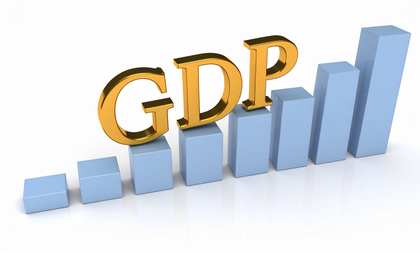IMF revises India’s GDP growth upward to 6.4 pc for FY26 and FY27
By IANS | Updated: July 29, 2025 19:04 IST2025-07-29T18:59:45+5:302025-07-29T19:04:37+5:30
New Delhi, July 29 India is projected to see 6.4 per cent GDP growth in FY26 and FY27, ...

IMF revises India’s GDP growth upward to 6.4 pc for FY26 and FY27
New Delhi, July 29 India is projected to see 6.4 per cent GDP growth in FY26 and FY27, with both numbers revised slightly upward, reflecting a more benign external environment than assumed in the April reference forecast, the International Monetary Fund’s (IMF) World Economic Outlook (WEO) report said on Tuesday.
The IMF revised upwards its outlook for India’s GDP growth for the current fiscal by 20 basis points (bps) to 6.4 per cent. The global agency also revised upwards its growth forecast for FY27 by 10 bps to 6.4 per cent.
“Global growth is projected at 3.0 per cent for 2025 and 3.1 per cent in 2026, an upward revision from the April 2025 World Economic Outlook. This reflects front-loading ahead of tariffs, lower effective tariff rates, better financial conditions, and fiscal expansion in some major jurisdictions,” said the IMF in its report.
Global inflation is expected to fall, but US inflation is predicted to stay above target. Downside risks from potentially higher tariffs, elevated uncertainty, and geopolitical tensions persist, it added.
In emerging market and developing economies, growth is expected to be 4.1 per cent in 2025 and 4.0 per cent in 2026.
Global headline inflation is expected to fall to 4.2 per cent in 2025 and 3.6 per cent in 2026, a path similar to the one projected in April. The overall picture hides notable cross-country differences, with forecasts predicting inflation will remain above target in the United States and be more subdued in other large economies.
“Risks to the outlook are tilted to the downside, as they were in the April 2025 WEO. A rebound in effective tariff rates could lead to weaker growth. Elevated uncertainty could start weighing more heavily on activity, also as deadlines for additional tariffs expire without progress on substantial, permanent agreements,” said the IMF report.
Geopolitical tensions could disrupt global supply chains and push commodity prices up. Larger fiscal deficits or increased risk aversion could raise long-term interest rates and tighten global financial conditions.
“Combined with fragmentation concerns, this could reignite volatility in financial markets. On the upside, global growth could be lifted if trade negotiations lead to a predictable framework and to a decline in tariffs. Policies need to bring confidence, predictability, and sustainability by calming tensions, preserving price and financial stability, restoring fiscal buffers, and implementing much-needed structural reforms,” the IMF highlighted.
Disclaimer: This post has been auto-published from an agency feed without any modifications to the text and has not been reviewed by an editor
Open in app